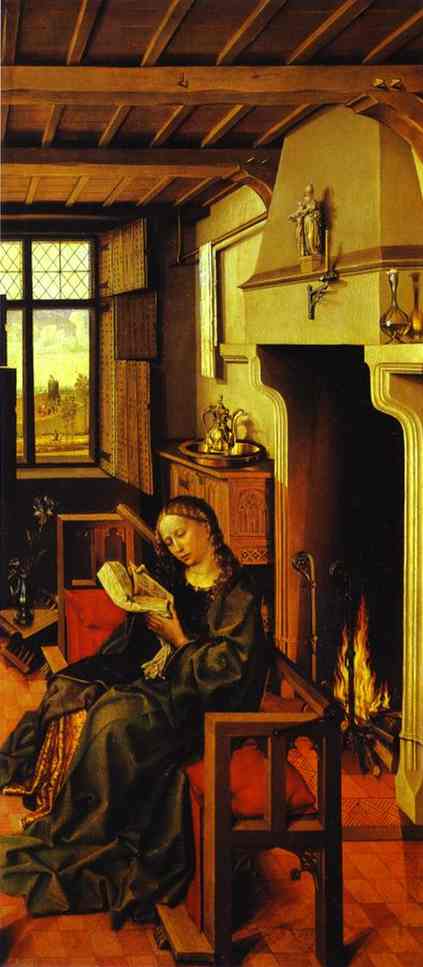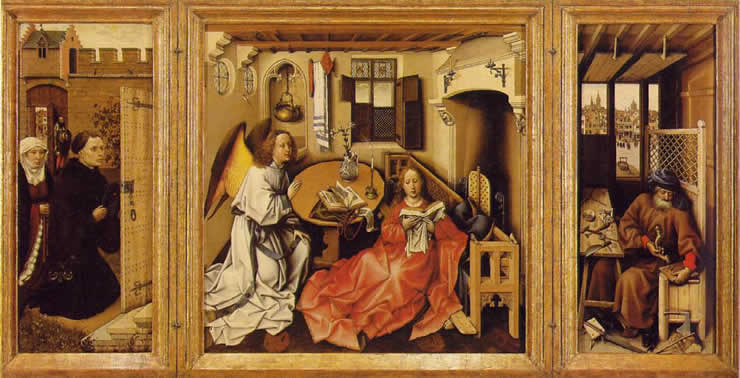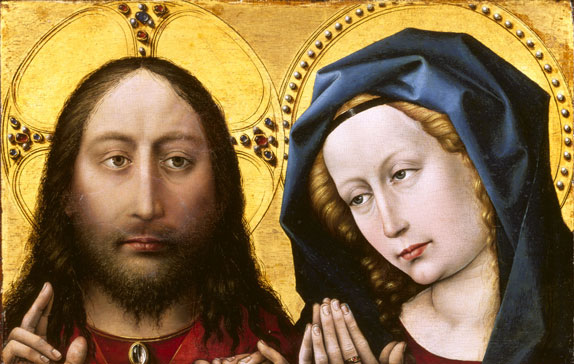Robert Campin (AKA Master of Flemalle) (1375/80-1444)
Get a Campin Certificate of Authenticity for your painting (COA) for your Campin drawing.
For all your Campin artworks you need a Certificate of Authenticity (COA) in order to sell, to insure or to donate for a tax deduction.
Getting a Campin Certificate of Authenticity (COA) is easy. Just send us photos and dimensions and tell us what you know about the origin or history of your Campin painting or drawing.
If you want to sell your Campin painting or drawing use our selling services. We offer Campin selling help, selling advice, private treaty sales and full brokerage.
We have been authenticating Campin and issuing certificates of authenticity since 2002. We are recognized Campin experts and Campin certified appraisers. We issue COAs and appraisals for all Campin artworks.
Our Campin paintings and drawings authentications are accepted and respected worldwide.
Each COA is backed by in-depth research and analysis authentication reports.
The Campin certificates of authenticity we issue are based on solid, reliable and fully referenced art investigations, authentication research, analytical work and forensic studies.
We are available to examine your Campin painting or drawing anywhere in the world.
You will generally receive your certificates of authenticity and authentication report within two weeks. Some complicated cases with difficult to research Campin paintings or drawings take longer.
Our clients include Campin collectors, investors, tax authorities, insurance adjusters, appraisers, valuers, auctioneers, Federal agencies and many law firms.
We perform Robert Campin art authentication, appraisal, certificates of authenticity (COA), analysis, research, scientific tests, full art authentications. We will help you sell your Robert Campin or we will sell it for you.

Robert Campin was born some time between 1375-1380 in Tournai, the Netherlands, and is considered to be one of the founders of Netherlandish painting during the early Renaissance. It is thought by some art historians that Campin was also the “Master of Flemalle,” the so-called unknown author of the mantelpiece at the Flemalle monastery. However, there is some speculation whether or not it was actually Campin who created the mysterious piece.

During Campin’s time, he was undoubtedly influenced by the masters of illuminated manuscripts; however, his work shows a greater presence of Realism than any other artist during his era. Prior to the 20th century, art historians credited Jan van Eyck as the first painter to depart from Gothic art conventions. This departure has since been attributed to Campin, due to the belief that he painted the altarpiece of Flemalle (Also known as “The Merode Altarpiece”).

Campin’s earliest influences were the Limburg brothers, as well as painters of the Burgundy court. However, he soon moved on the three-dimensional figure representation as well as depth exploration. In his later works, Campin was obsessed with perspective, and was thought to have taught fellow Netherlandish artist Rogier van der Weyden
Art historians have even credited Campin’s work “Christ Blessing with the Virgin in Prayer” as the piece which influenced the beginning of the diptych. Though not a diptych itself, “Christ Blessing the Virgin in Prayer” inspired his followers to begin this trend of painting matching panel scenes that were hinged and would close like a small book.

Though most of Campin’s works are likely to be housed in public and private collections, the possibility of one of his unknown works or sketches surfacing is still quite possible. Stolen altarpieces during wartime and drawings stuffed in between the pages of old books still surface today, and such a work by Campin would be quite valuable. As it was the style of the day, most of these works would likely be of religious subjects, and would possess a quality unlike that of any other artist of his era. These pieces could include panels, diptychs and triptychs.
Today, Campin’s works are housed at the Hermitage Museum, The Prado Museum and the National Gallery in London. Still wondering about an early 15th century Netherlandish painting or drawing in your family estate? Contact us…it could be by Robert Campin.
Reviews
1,217 global ratings
5 Star
4 Star
3 Star
2 Star
1 Star
Your evaluation is very important to us. Thank you.
